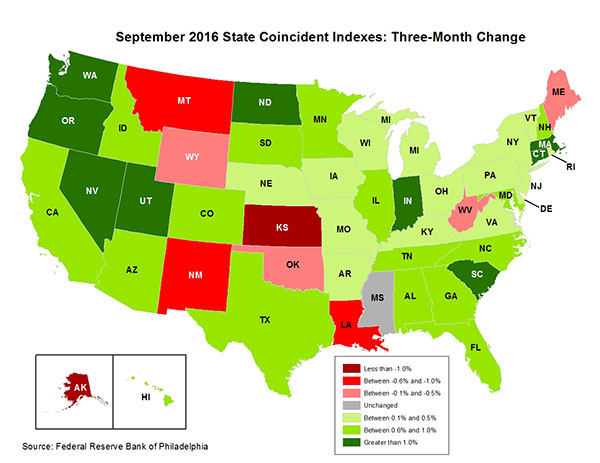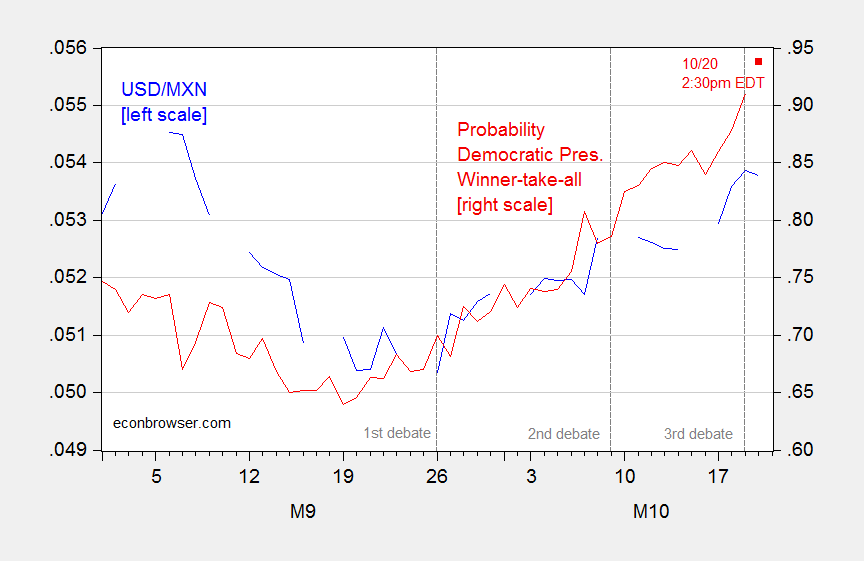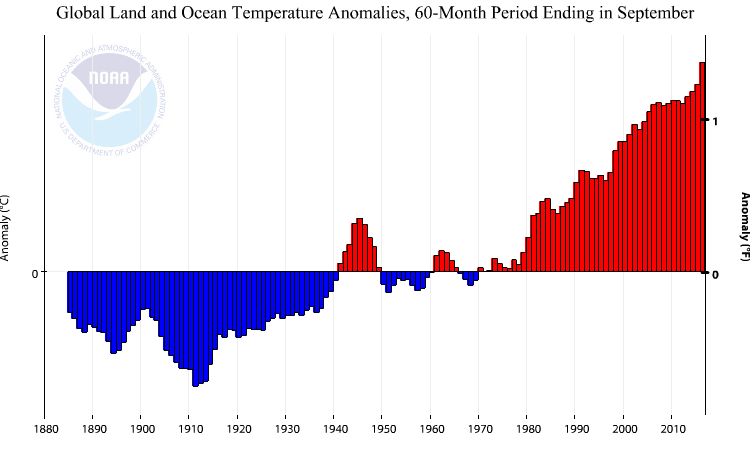The Philadelphia Fed released coincident indices today. Figure 1 shows state-by-state 3 month trends. Needless to say, the outlook for Kansas — that laboratory for supply side nostrums — is not auspicious.

Source: Philadelphia Fed, accessed 26 Oct 2016.
While Alaska seems to be in the running for worst performing, in fact the 3 month (annualized) decline of 4.5% for Kansas is the worst in the 50 states.


